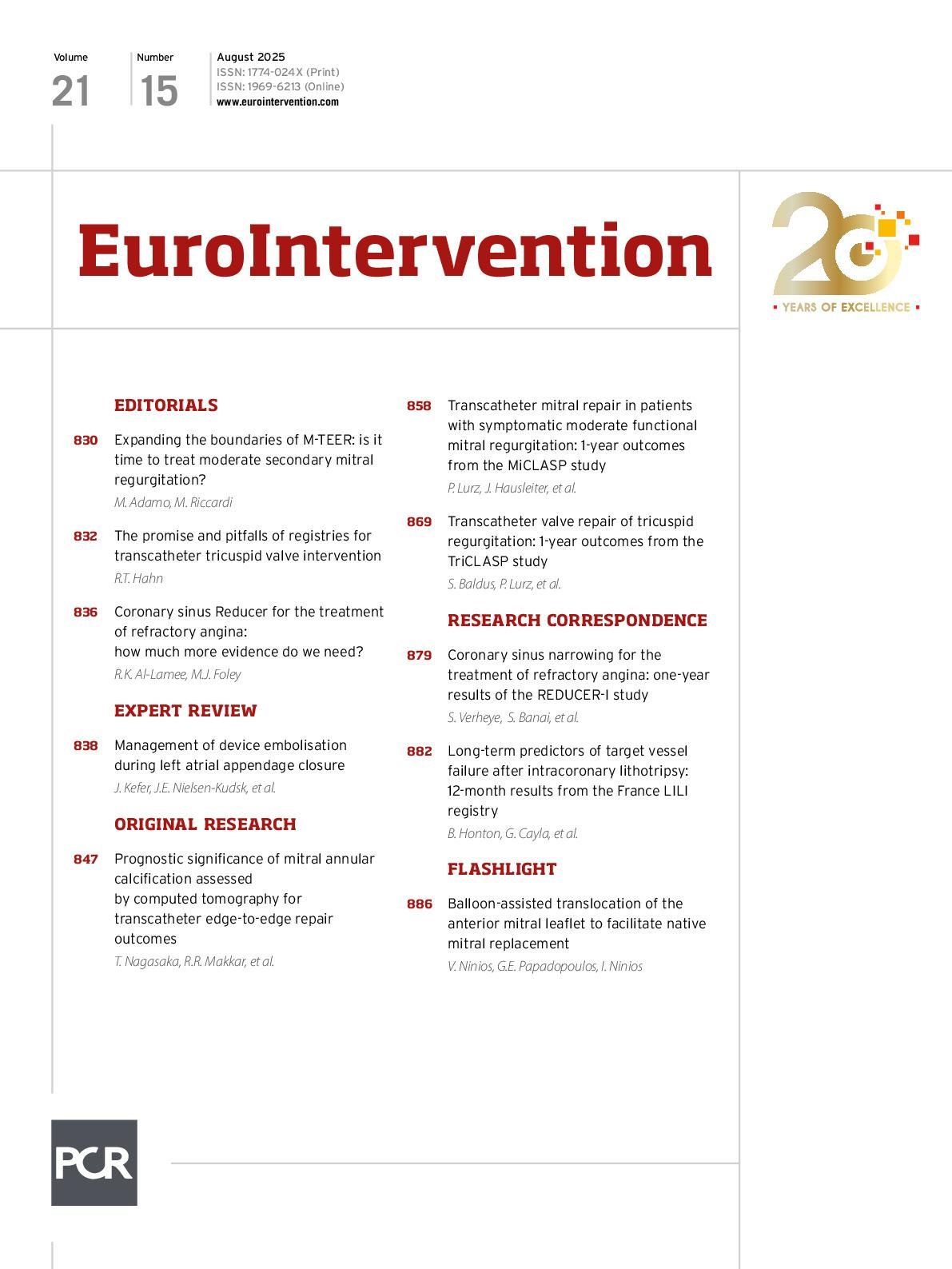Abstract
Background: Mitral annular calcification (MAC) presents challenges for transcatheter edge-to-edge repair (TEER). Limited data exist on how the anatomical features of MAC, assessed by computed tomography (CT), may be associated with TEER outcomes.
Aims: We sought to examine the association between CT features of MAC and clinical outcomes after TEER at 3 years.
Methods: This retrospective observational study included patients who underwent TEER and preprocedural CT. Patients were classified into no/mild MAC and moderate/severe MAC groups. Classification was determined by scoring calcium thickness, distribution, trigone involvement, and leaflet calcification. The primary outcome was all-cause mortality 3 years after TEER.
Results: Among 391 patients who underwent pre-TEER cardiac CT, 318 (81.3%) had no/mild MAC, and 73 (18.7%) had moderate/severe MAC. At 3 years, all-cause mortality was comparable between the groups (17.6% vs 24.7 %; p=0.17), whereas patients with no/mild MAC had a significantly better New York Heart Association Class than those with moderate/severe MAC (p=0.029). Calcium thickness >5 mm and leaflet involvement were significant predictors of all-cause mortality at 3 years (odds ratio [OR] 2.38, 95% confidence interval [CI]: 1.08-5.25; p=0.032; OR 6.71, 95% CI: 3.28-13.7; p<0.001); patients exhibiting both of these indicators had a significantly higher incidence of all-cause mortality compared to those with calcium thickness ≤5 mm and no leaflet calcification.
Conclusions: Overall, all-cause mortality did not significantly differ between patients with varied MAC severity. However, greater calcium thickness and leaflet involvement were associated with worse clinical outcomes in patients undergoing TEER. Detailed preoperative CT evaluation can facilitate the prediction and management of TEER outcomes.
Sign up for free!
Join us for free and access thousands of articles from EuroIntervention, as well as presentations, videos, cases from PCRonline.com

